Springtime Management
Wettest winter on record
It’s official the 2019/20 winter was the wettest since records began. Our statistics went off the scale yet again in February confirming just under twelve inches for that month alone. Yet since 16th March we have had very little rainfall which has been a welcome relief.
The whole UK went onto emergency lockdown on the 23rd March due to the Coronavirus outbreak. This brings new challenges to each and everyone of us and will be an incredibly testing time. Work within our woodland has therefore ceased for the time being due to movement restrictions and as soon as these restrictions are lifted we will get back to the task in hand.
Rain didn’t stop play.
Despite the huge amounts of rainfall we did manage to complete most of our winter projects. Making clearings, widening rides and planting new species were some of the projects.
The frogs and toads have been busy spawning across the top two ponds and we were pleased to see it in quite large amounts. They are all developing nicely. Dragonfly Larvae and Smooth Newts have also been found in the ponds which were only constructed in the Spring last year. It really is amazing how wildlife colonises new habitat especially in this case as there are no other ponds nearby.
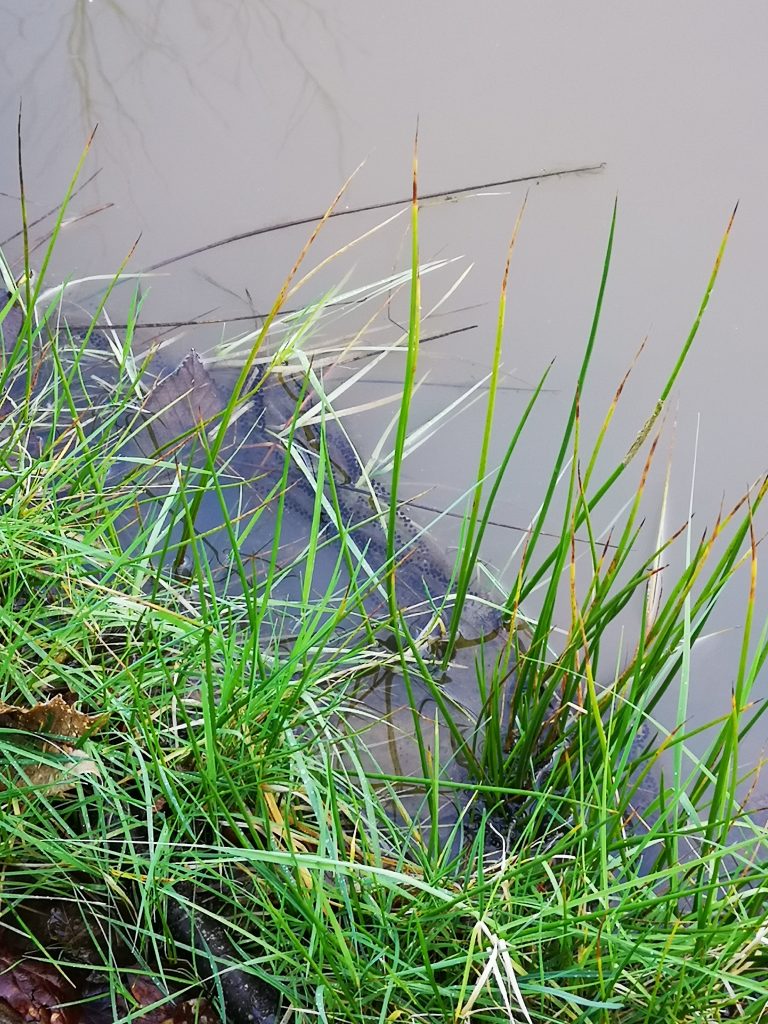
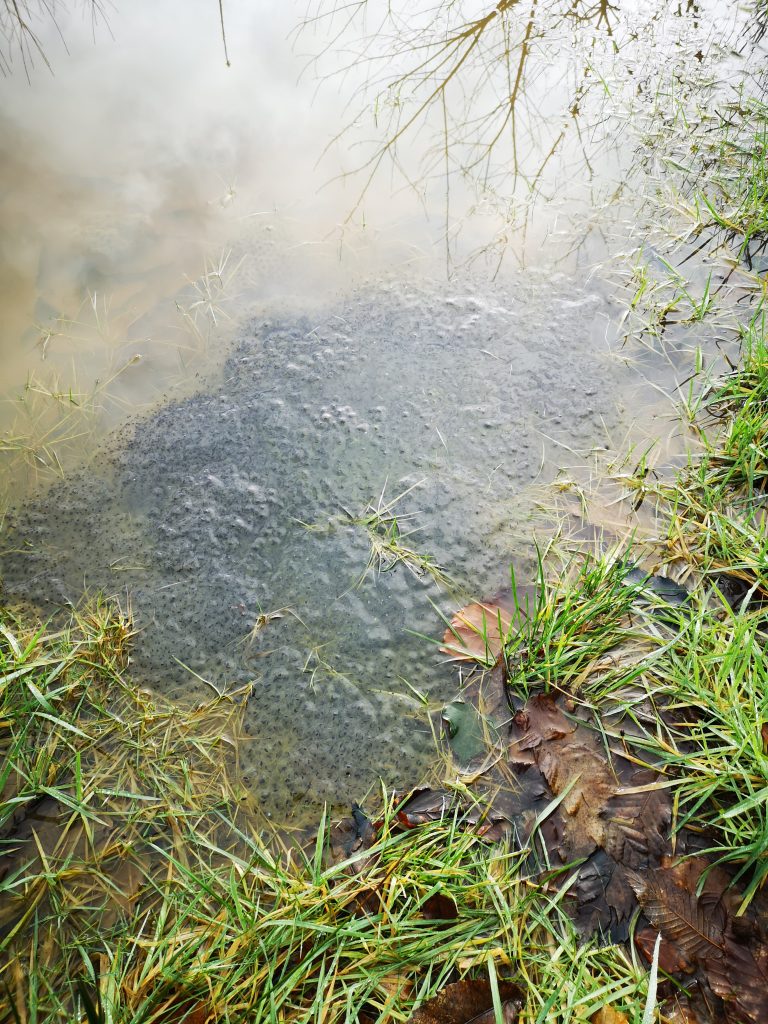
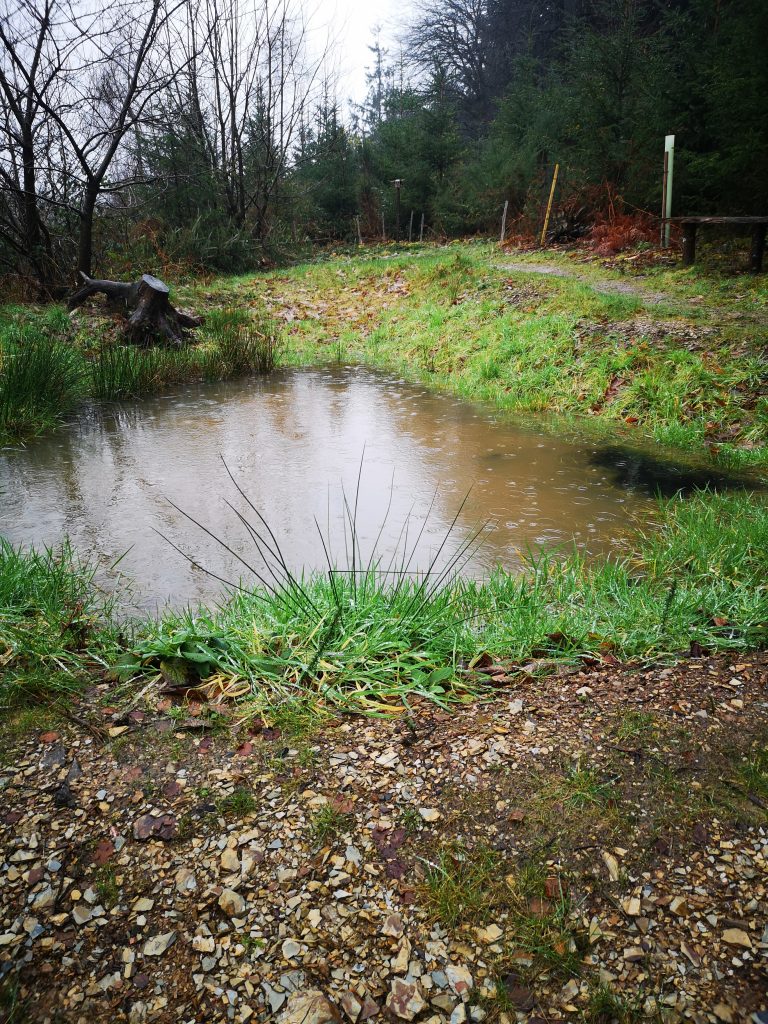
Care and maintenance
With over 400 saplings planted of many different species since November 2018 much work is required to maintain their growth. Some were planted within a 1.2 meter Tubex shelter, these provide protection from rabbits, hares, voles and the Roe Deer. This is the official recognised height deemed to be Roe Deer safe. Roe Deer will eat all new shoots and buds which then results in little or no growth. The Tubex shelter houses the sapling and then the tube is cable tied to a stake. The tube itself provides a micro climate for the young plant which then results in better establishment and higher survival rates. As the tree grows and its trunk diameter reaches that of the tube the tube will naturally split down its manufactured perforated laser line.

Ongoing maintenance is required to keep the immediate area weed and grass free so that the sapling is not competing for moisture and nutrients. The cable ties to the stakes also require regular checking as these are sometimes nibbled through by rodents. The tubes can be carefully lifted whilst you remove any grass or debris from inside the tube. This is very important in order to provide the sapling with space, light, airflow, moisture and nutrients.
The same care methods also apply to the spirals which are only 600mm in height of which we have over 300. These spirals are ok to protect from rabbits but we will need to monitor the plants as they grow out of the top of the spirals. If necessary we will mesh around to protect from the grazing Roe Deer. If this meshing is required it will stay in place for many years to allow the plants to establish unhindered.
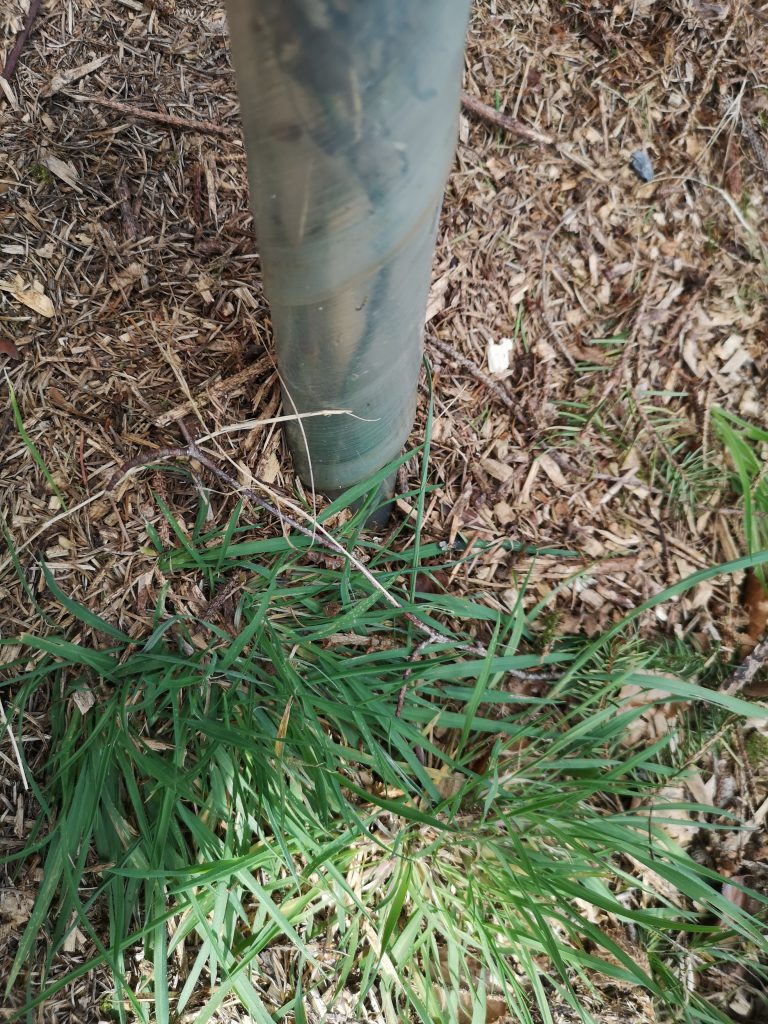
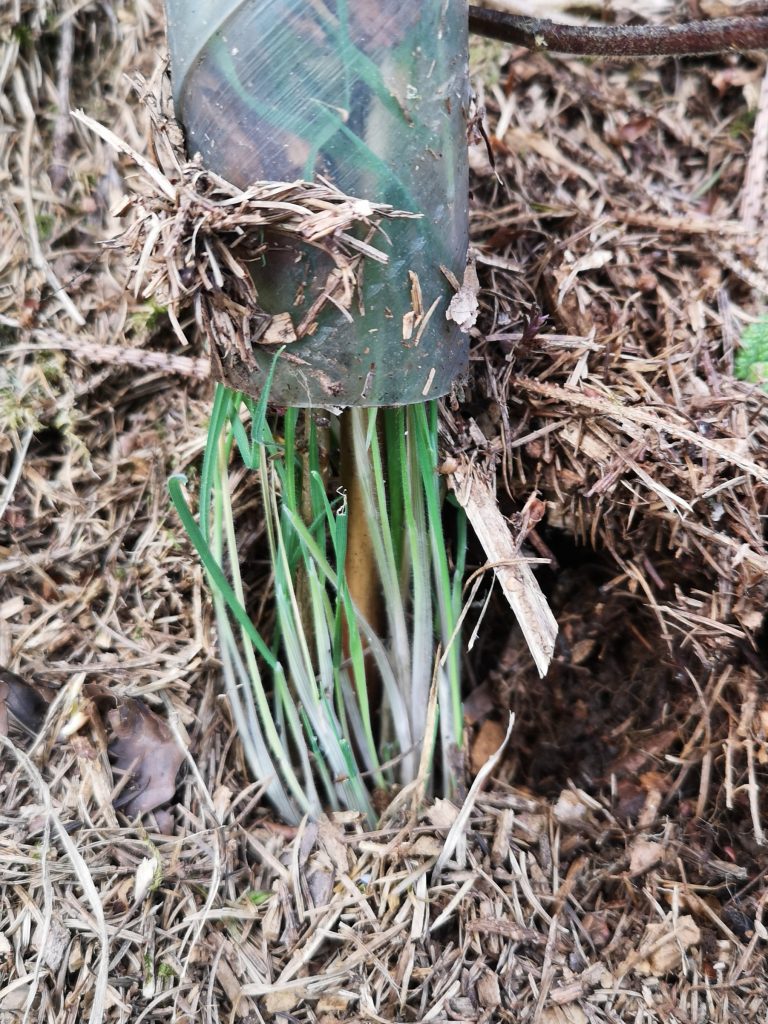
Dead wood
With recent high winds one of our standing dead trees is now a lying dead tree, the extent of the rot can been seen in the picture below. This decaying wood is vital to the ecology of the woodland and provides a vital habitat for many invertebrates. It will stay where it has fallen.
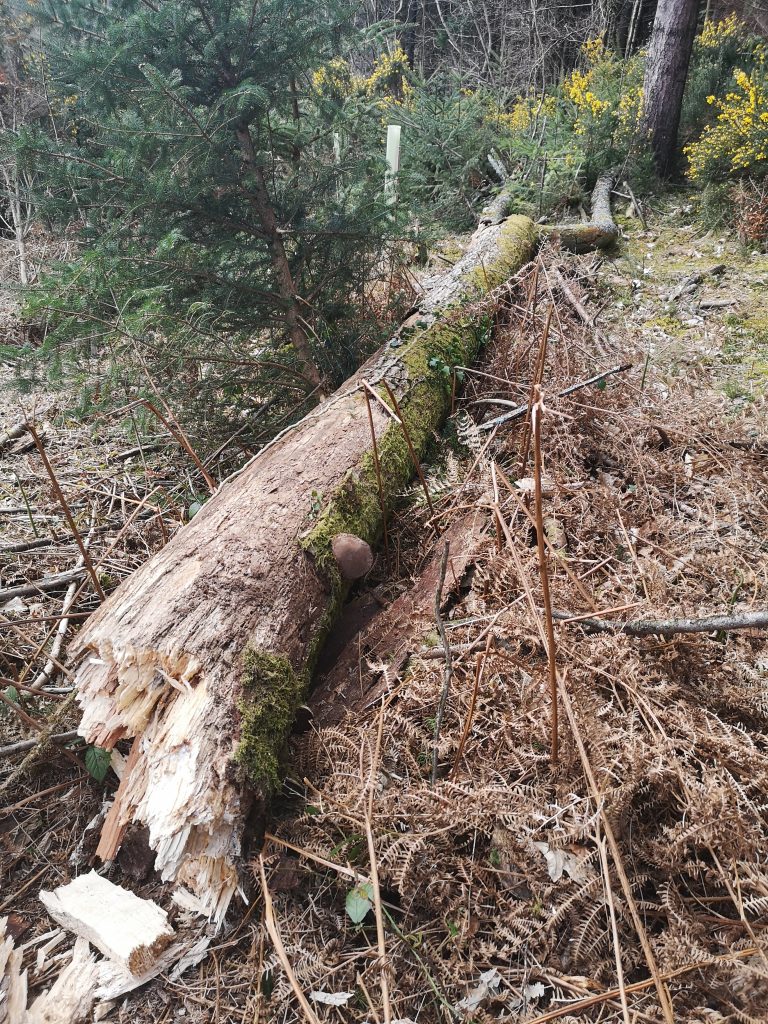
With all work currently on hold within our woodland we will undoubtedly miss the returning Nightjar in May. We will also miss the emergence of the froglets and toadlets. During normal times we can supplement watering during dry periods due to 1000 litres of water butts, but unless we have periodic rainfall we will expect to have some casualties upon our return, but in the grand scheme of things!!??
We will be back down there as soon as the restrictions in movement is lifted and it is safe to do so and we all hope that it won’t be too long. Stay safe and stay healthy. Steve@woodland wildlife.



